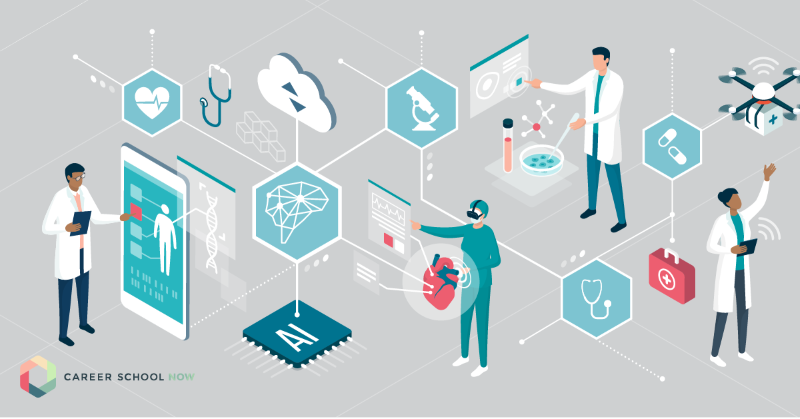A Total Overview to Medical Administration Certifications and Accreditations
A Total Overview to Medical Administration Certifications and Accreditations
Blog Article
Ideal Practices in Medical Administration for Improving Efficiency and Decreasing Prices
In the ever-evolving landscape of medical care, the search of best methods in clinical administration is extremely important for boosting efficiency and curbing expenses. By incorporating advanced modern technologies such as digital wellness documents and telemedicine, healthcare carriers can streamline operations and boost client treatment.
Leveraging Advanced Innovation
The assimilation of digital options right into health care systems has transformed the means centers run, improving procedures and enhancing client care. By streamlining person information, EHRs get rid of the demand for difficult paperwork and assist in smooth communication amongst health care suppliers.
Telemedicine is an additional technical development that has revolutionized client communication. It provides convenience for both people and medical care professionals by enabling remote appointments, which can decrease the demand for in-person gos to and enhance consultation organizing. Additionally, telehealth systems can extend healthcare accessibility to rural or underserved locations, bridging gaps in care shipment.
Additionally, the usage of Artificial Knowledge (AI) and device discovering is coming to be progressively prevalent in anticipating analytics, enabling very early discovery of possible health and wellness issues and more educated decision-making. These modern technologies, when integrated efficiently, can boost diagnostic precision and individualize person treatment strategies, inevitably leading to improved health care end results and functional effectiveness.
Optimizing Resource Allowance
Effective source allocation is vital for optimizing the effectiveness of clinical administration. By strategically handling resources such as workers, equipment, and financial resources, medical care facilities can dramatically boost their operational performance, boost person results, and minimize unnecessary expenditures. The primary step in maximizing resource allotment involves performing a detailed assessment of existing assets and recognizing areas where sources may be underutilized or overextended. This assessment ought to be data-driven, using metrics and analytics to inform decision-making processes.
Focusing on source appropriation based upon patient needs and solution needs is necessary. This entails aligning sources with high-demand areas, such as emergency treatment or specialized treatments, to ensure timely and effective individual care. Executing flexible staffing versions can additionally enhance labor resources by adjusting employees allowance in response to rising and fall client quantities. Furthermore, welcoming telemedicine and other technical solutions can alleviate physical source constraints by using different opportunities for patient-provider communications.
Funds should be carefully checked and allocated with calculated insight to support both short-term operational requirements and lasting institutional objectives. This consists of investing in training programs that improve team competencies and adopting energy-efficient practices that decrease functional expenses (medical administration). Eventually, a maximized resource appropriation strategy fosters a sustainable healthcare environment that is responsive, effective, and economically prudent
Streamlining Process Processes
When health care facilities objective to enhance operational effectiveness, improving process processes becomes a pivotal focus. Efficient workflows minimize redundancy, remove unneeded actions, and improve sychronisation among healthcare professionals. This method not only increases solution shipment however likewise enhances the quality of patient treatment.

Following, innovation assimilation plays a considerable role in simplifying process. Executing digital health and wellness records (EHRs) and electronic medical professional order entrance (CPOE) systems lowers paperwork, reduces human mistake, and ensures info comes to all appropriate workers. Additionally, leveraging telemedicine systems can streamline person appointments and follow-ups, minimizing the pressure on physical infrastructure.

Inevitably, structured process bring about set you back reductions and boosted person fulfillment, promoting an extra sustainable healthcare atmosphere.
Enhancing Information Monitoring
Structure upon streamlined process, maximizing data management comes to be an important component ahead of time health care management. Effective data management systems are important for keeping precise patient records, enhancing decision-making, and guaranteeing compliance with governing requirements. By executing robust information administration services, healthcare centers can improve the quality of individual care while at the same time decreasing functional expenses.
One key element of enhancing information administration is the integration of sophisticated electronic wellness record (EHR) systems. These systems promote the smooth exchange of patient details across various divisions, reducing replication of tests and minimizing mistakes. A well-designed EHR system supports data analytics, enabling healthcare providers to recognize fads and make notified decisions concerning person care.
In addition, address guarding individual data is critical. Taking on thorough cybersecurity actions, including you can check here security and routine audits, guarantees the integrity and discretion of delicate details. This not only shields individuals but additionally preserves the institution's track record.
Investing in staff training is another critical aspect. Enlightening health care experts on data administration practices boosts their capacity to effectively use technology, causing boosted client outcomes. Finally, enhancing information management via innovative innovation and thorough training is crucial for achieving effectiveness and price reduction in clinical administration.
Fostering Collaborative Interaction
An essential component ahead of time medical administration is promoting collective communication amongst medical reference care specialists. Efficient communication is critical for guaranteeing seamless individual care, enhancing therapy results, and minimizing mistakes. By motivating open dialogue and sychronisation across multidisciplinary groups, health care organizations can enhance their functional performance and minimize unnecessary costs.
Central to this strategy is the assimilation of communication innovations such as electronic wellness records (EHRs) and secure messaging systems, which assist in the rapid exchange of essential patient details. These tools enable medical care providers to accessibility and share data in real time, making certain that all staff member are educated and aligned in their decision-making procedures. Additionally, routine group meetings and interdisciplinary rounds can further advertise a culture of cooperation and responsibility.
Educating programs focused on improving interaction skills are additionally important. Inevitably, fostering collective interaction leads to boosted healthcare delivery and expense financial savings.

Final Thought
Including innovative technology, such as electronic wellness records and telemedicine, alongside maximized source appropriation and streamlined process processes, is crucial for boosting efficiency in medical administration. Efficient information administration and promoting collective communication among health care teams are important for decreasing redundancies and boosting care high quality. By prioritizing preventative treatment and taking part in quality renovation initiatives, medical care companies can attain significant expense savings and enhanced patient end results, therefore guaranteeing sustainable health care delivery in an increasingly complex setting.
Report this page